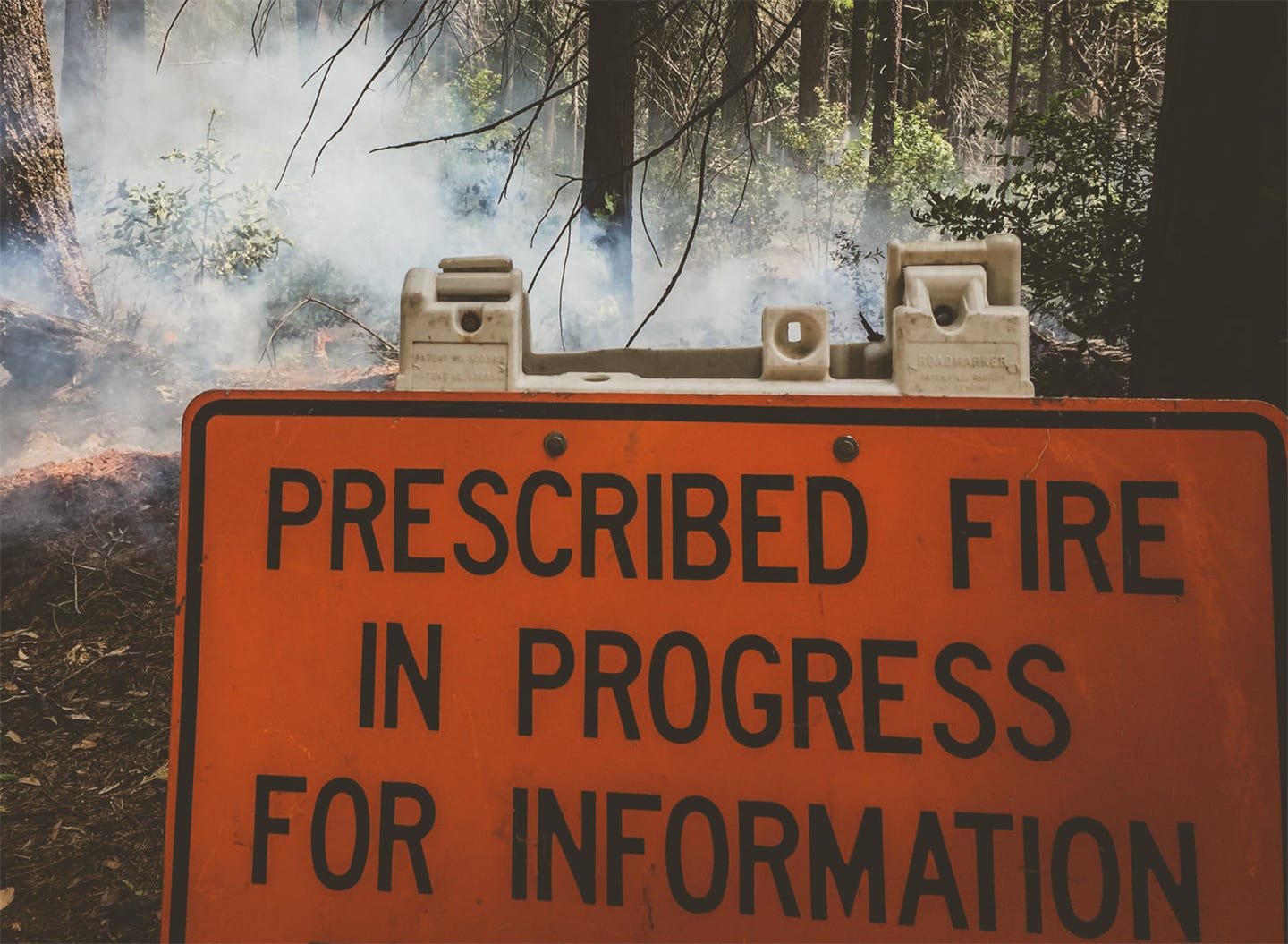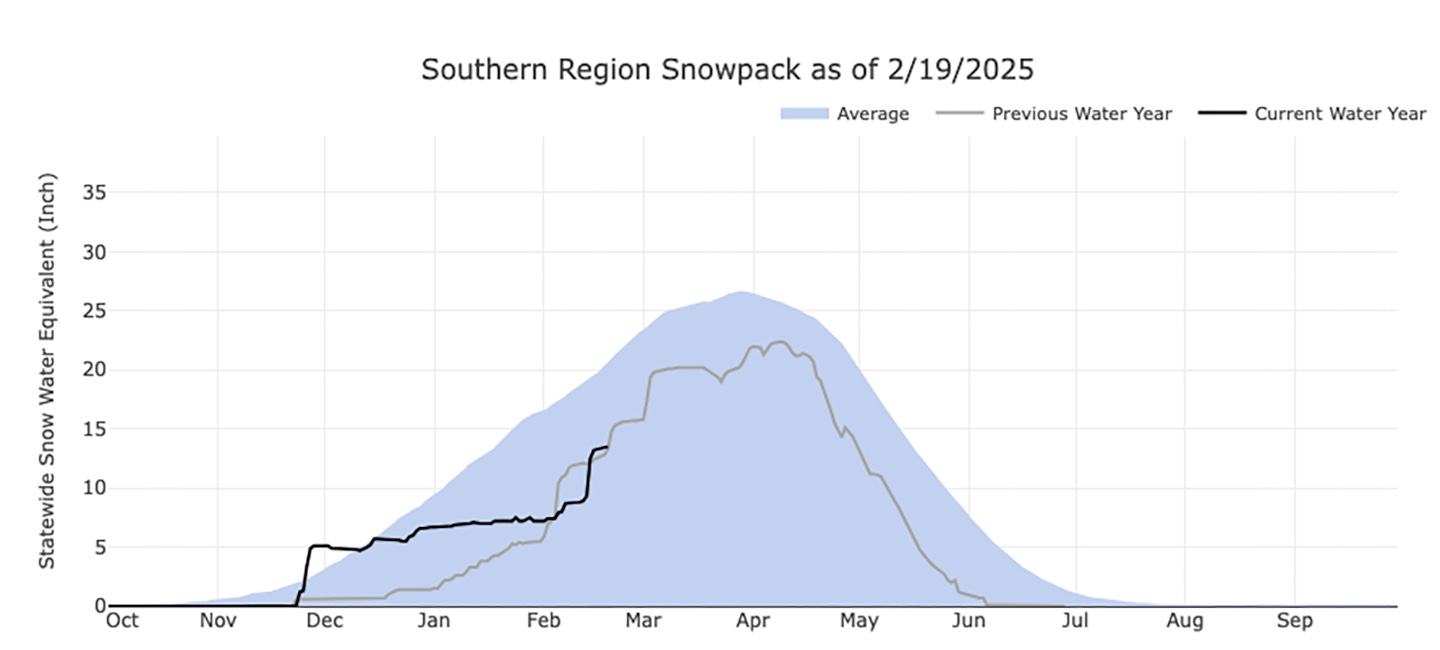Volume 3, Number 51 - Thursday, Feb. 20, 2025
Published every Monday and Thursday

Perspective
HOW SIERRA AND SEQUOIA NATIONAL FORESTS might increase the scale of prescribed burning to achieve a long list of objectives is described in a 226-page environmental assessment released by the forests last October.
I wrote about this proposal in May 2024 (HERE), and also encouraged readers to be familiar with at least the basics of NEPA (the National Environmental Policy Act). As a reminder, under NEPA, an environmental assessment — or EA — is one of the ways land managers evaluate their plans for compliance.
As I reported last spring, some people and organizations believed that a higher level evaluation was needed for the project, meaning an EIS (environmental impact statement).
So far, the Forest Service appears to be sticking with an EA for this project and here’s where things stand:
Scoping for the project began in October 2023. A comment period began in October 2024 when the EA was released. A visit to the online “reading room” for Sequoia and Sierra National Forests Prescribed Fire Project #65081 (HERE), shows that 3,407 comments were received.
In April, if the schedule stays as published, the objection period will begin, followed by (perhaps in July) the decision and implementation. When objections are filed — as they surely will be — the agency will publish them online, along with responses.
This, by the way, is the dance that federal land managers must go through to comply with NEPA. In this case, two national forests that happen to have many giant sequoia groves, are doing the dance together.
The EA notes that from 2018 to 2021, the two forests experienced catastrophic wildfires, affecting about 28% of the 2.4 million acre land base. I’m trying to boil it down here, but basically the idea is to use fire to prevent fire by reducing the fuel buildup to lessen the risk of large and severe wildfire.
The forests have put forth what they call “Alternative A” as the proposed action. With that alternative, more than 2 million acres might be burned, including 304,121 acres in Giant Sequoia National Monument.
Of course, burning isn’t just burning (unless it’s a wildfire).
The EA describes the “pretreatment tools” or burn preparation that would be needed.
As an example, on page 14:
To achieve and maintain desired conditions over time, multiple entries could occur within the same site. The number of re-entries into the same site would depend on several factors, including the initial treatment method and how severely departed the site is from desired conditions. For example, a mechanical pretreatment that substantially reduces stand density would prepare a site for prescribed fire for much longer than a pretreatment using manual tools only to reduce ladder fuels.
Necessary pretreatment activities would vary by vegetation type, aspect, topography, fuel conditions, and treatment season to meet objectives before prescribed fire could be applied. Without the option to pre-treat vegetation in the implementation areas, few areas would be available for prescribed burn.
Those pre-treatment activities — including use of heavy equipment, cutting trees, borate treatment, road maintenance and temporary roads — often trigger the most concern from the public, along with inevitable smoke.
NEPA requires agencies to identify a no-action alternative. For this proposal, the EA states that without the project, “it can be expected that insect and disease outbreak and wildfire of uncharacteristic scale and behavior would continue to affect the forest …”
Another option considered but not the preferred alternative was Alternative C, the wilderness exclusion alternative.
This alternative — favored by some environmental groups — would reduce the total project area by about 36%.
There is lots more detail in the EA, which you can read here:
Wildfire, water & weather update
Sunny and mostly clear in the Sierra Nevada for the next week or so. The California Drought Map (HERE) shows improvement over a week ago because of recent storms. Even with those storms, today’s report from the Department of Water Resources California Cooperative Snow Surveys Program shows that the snowpack as of Feb. 19 was only 76% of normal to date and 59% of the April 1 average in the southern region. The situation is better in the central and northern regions, which is good news for California reservoirs that will provide summer water for farmers and cities. Details HERE.
Did you know you can comment here?
It’s easy to comment on items in this newsletter. Just scroll down, and you’ll find a comment box. You’re invited to join the conversation!
Thanks for reading!




